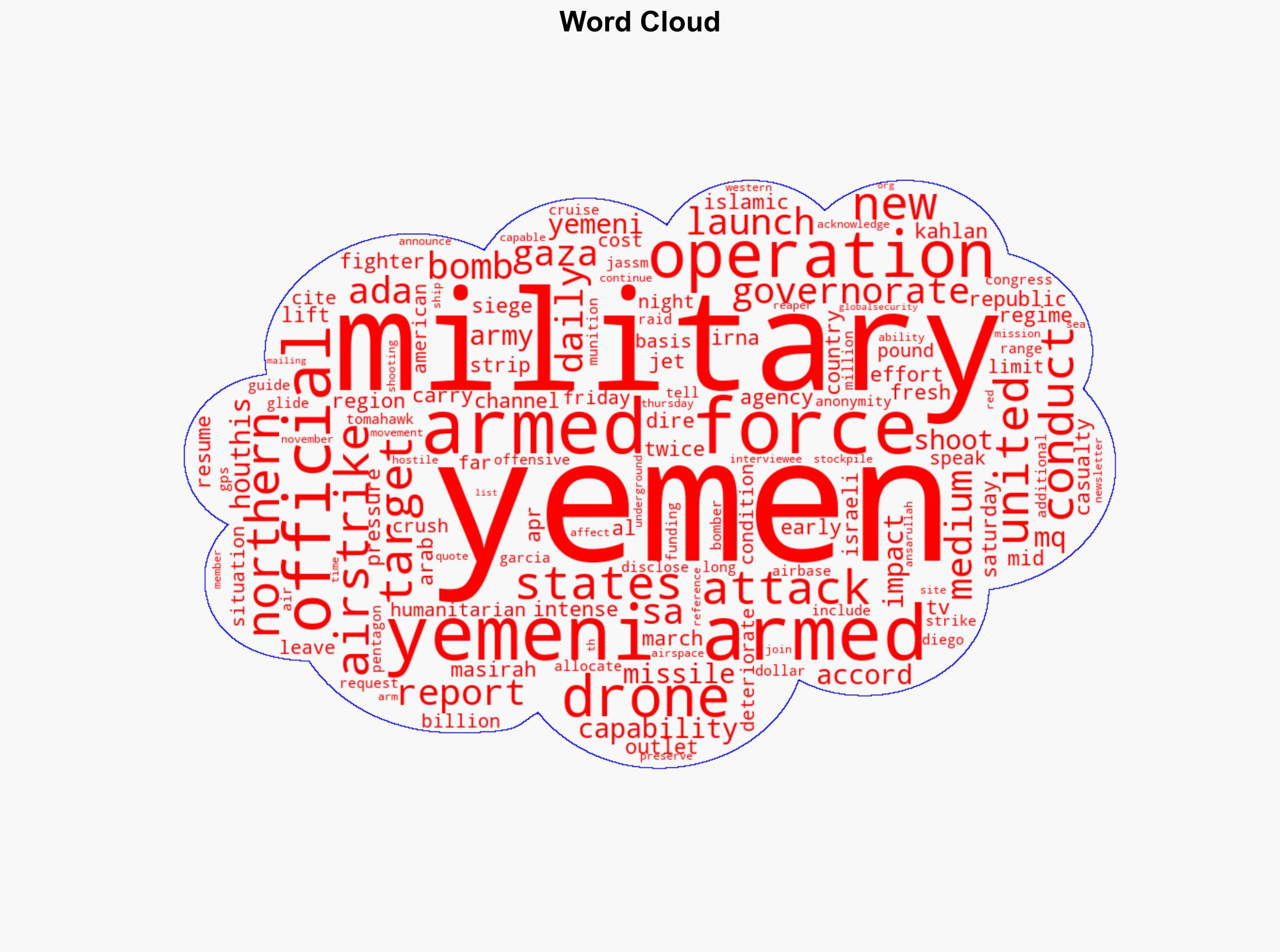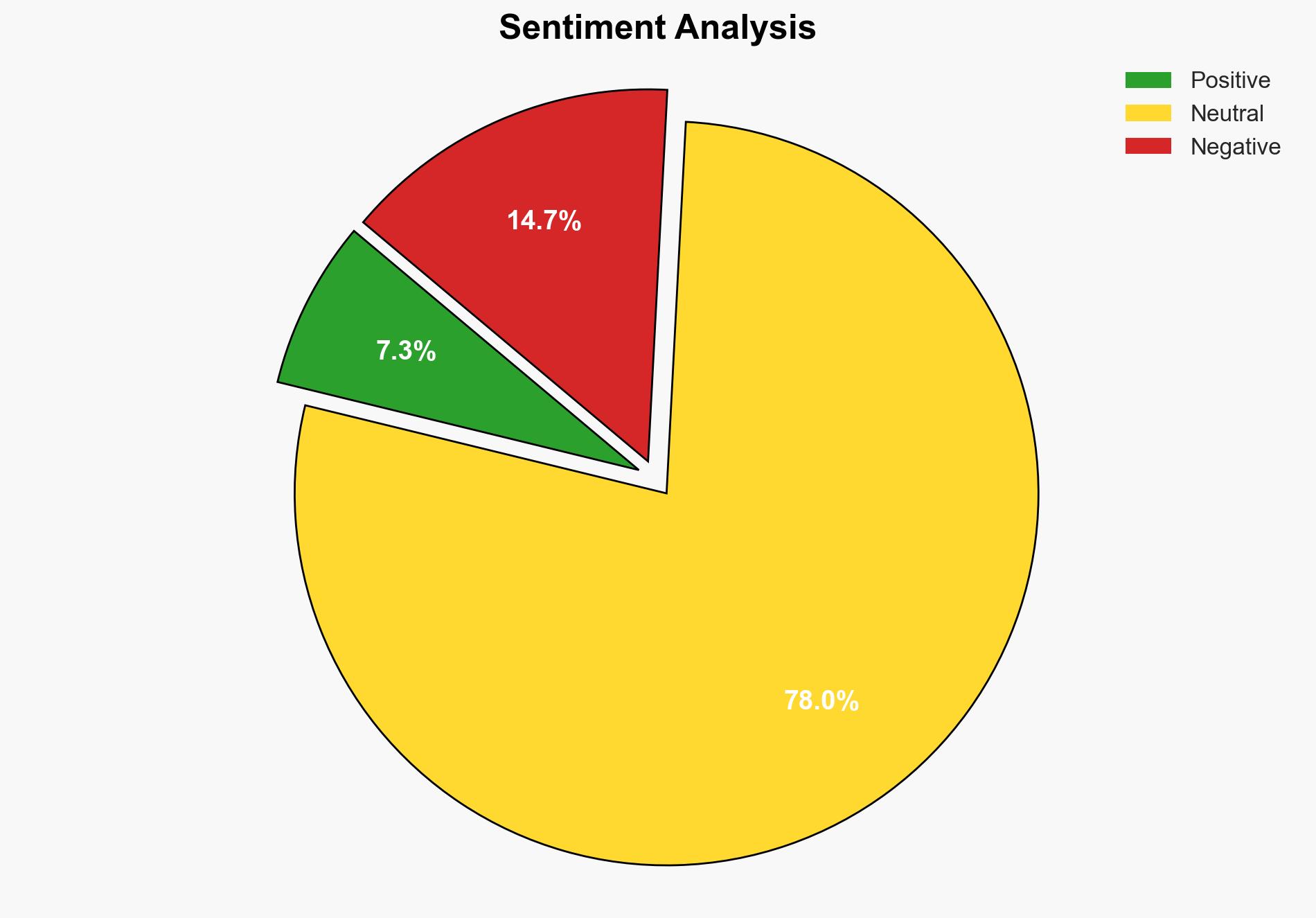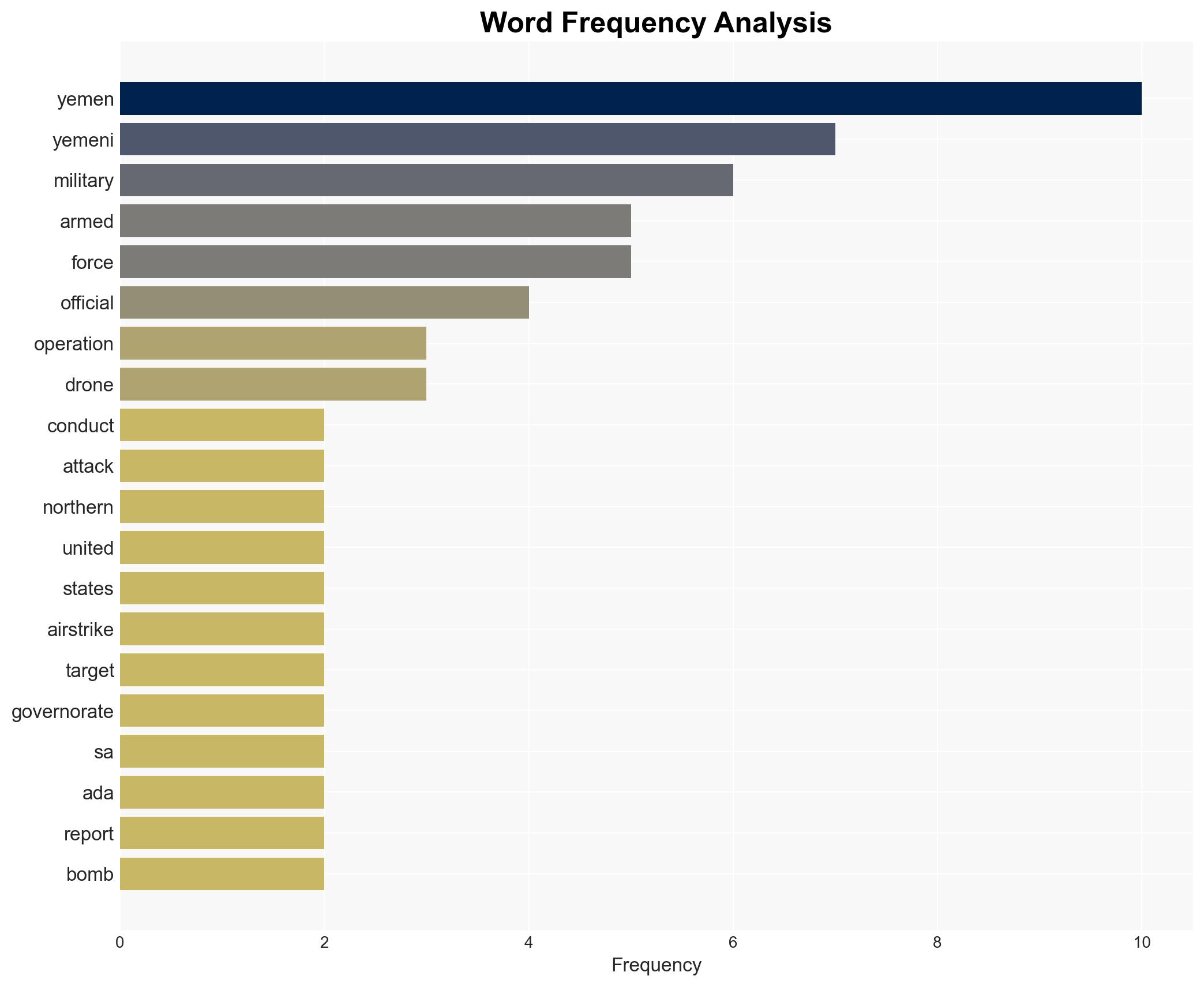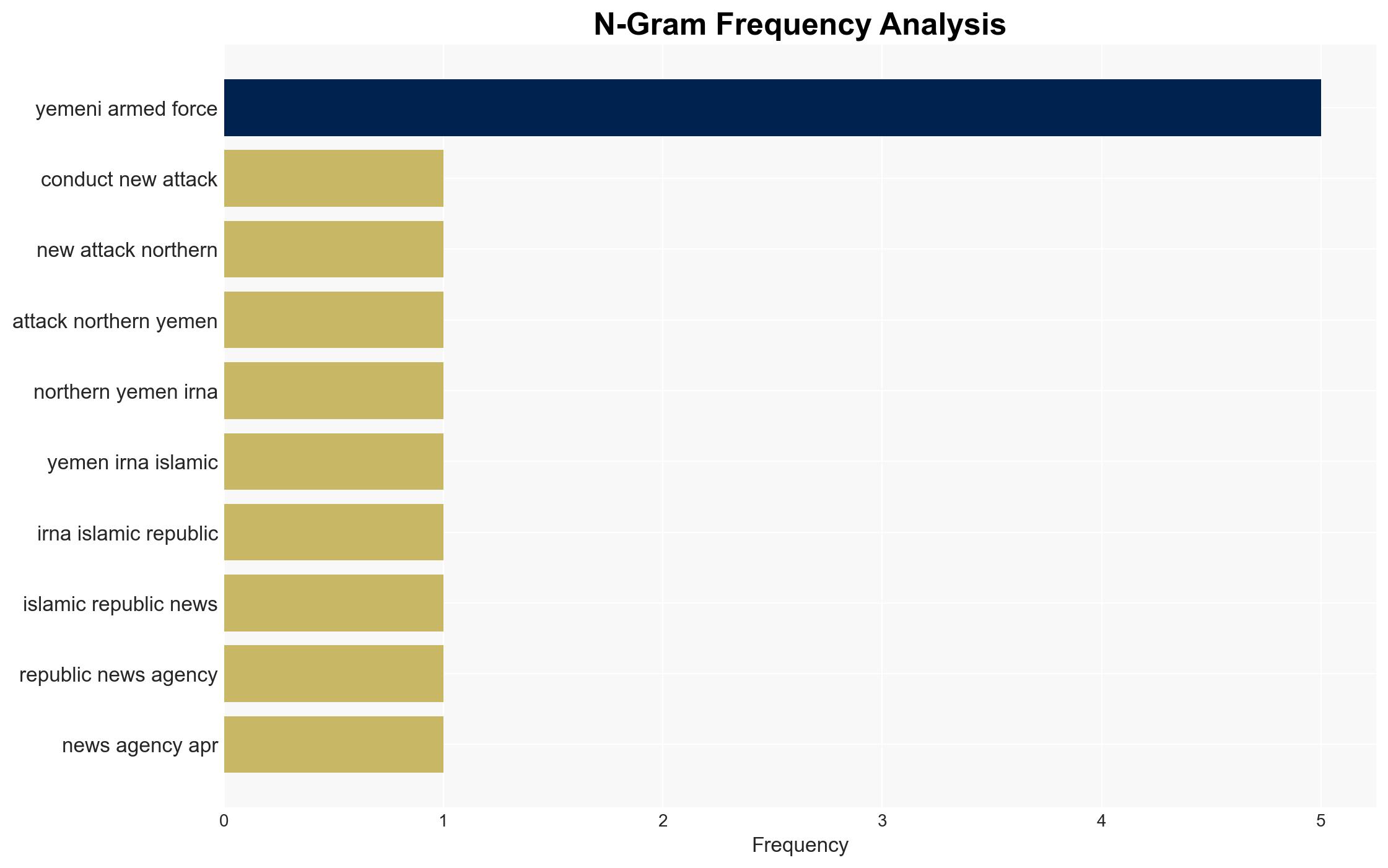The US conducts new attacks on northern Yemen – Globalsecurity.org
Published on: 2025-04-05
Intelligence Report: The US conducts new attacks on northern Yemen – Globalsecurity.org
1. BLUF (Bottom Line Up Front)
The United States has initiated a new series of airstrikes targeting the northern region of Yemen, specifically the Sa’ada governorate. The operations, reportedly involving advanced munitions and significant financial expenditure, aim to degrade the military capabilities of Yemeni armed forces. Despite these efforts, the Yemeni forces, particularly the Ansarullah movement, continue to demonstrate resilience, maintaining their operational capabilities. Immediate strategic recommendations include reassessing the efficacy of current military approaches and considering diplomatic avenues to address the ongoing conflict.
2. Detailed Analysis
The following structured analytic techniques have been applied for this analysis:
General Analysis
The recent airstrikes by the United States in northern Yemen are part of a continued military campaign aimed at pressuring regional adversaries and addressing humanitarian concerns linked to the siege of the Gaza Strip. The use of advanced weaponry, including JASSM long-range cruise missiles and Tomahawk missiles, underscores the strategic importance placed on these operations. However, the reported limited impact on the Yemeni armed forces’ capabilities suggests a need for reassessment of operational objectives and methods. The resilience of the Ansarullah movement, evidenced by their ability to down an MQ-9 Reaper drone, highlights the ongoing challenges faced by external military interventions.
3. Implications and Strategic Risks
The continuation of airstrikes in Yemen poses several strategic risks, including:
- Escalation of regional tensions, potentially drawing in additional state and non-state actors.
- Increased humanitarian crises, exacerbating the already dire conditions faced by civilians in Yemen.
- Potential backlash against U.S. interests in the region, both diplomatically and through asymmetric warfare tactics.
The persistence of Yemeni armed forces’ capabilities, despite ongoing airstrikes, indicates a potential for prolonged conflict, undermining regional stability and economic interests.
4. Recommendations and Outlook
Recommendations:
- Reevaluate the current military strategy in Yemen to ensure alignment with broader geopolitical objectives.
- Enhance intelligence-sharing and collaboration with regional allies to improve operational effectiveness.
- Explore diplomatic channels to address underlying political and humanitarian issues contributing to the conflict.
Outlook:
In the best-case scenario, a recalibrated strategy incorporating diplomatic efforts could lead to a de-escalation of hostilities and improved humanitarian conditions. The worst-case scenario involves further entrenchment of conflict dynamics, leading to increased regional instability. The most likely outcome, given current trends, is a continuation of the status quo, with periodic escalations and ongoing humanitarian challenges.
5. Key Individuals and Entities
The report references significant individuals and entities involved in the conflict. Notably, the resilience of the Ansarullah movement and the operational decisions by American officials play crucial roles in shaping the conflict’s trajectory. Understanding their strategies and motivations is essential for informed decision-making.




